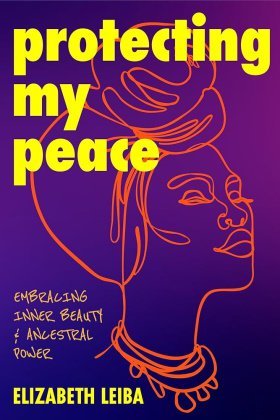1.I am more than society’s portrayal of me; I define my own beauty and worth.
2.Every facet of my being, from the tone of my skin to the texture of my hair, is a testament to a rich heritage and unique beauty.
3.I am the resilient descendant of strong Black women; their strength flows through me, and I carry their legacy with pride.
4.I am an agent of change, and with every step, I challenge the narratives that aim to diminish Black women.
5.By embracing my Afrocentric roots, I ground myself in a rich tapestry of history, culture, and wisdom.
6.I stand against colorism, recognizing the beauty in every shade of Black and advocating for unity in our diversity.
7.Regardless of societal standards, I see my worth, I embrace my beauty, and I celebrate my unique journey.
8.I am on a continual journey of self-love, healing from external judgments and internalized beliefs, and growing in my understanding of self-worth.
9.By sharing my story and listening to the stories of others, I find strength, solidarity, and pathways to collective healing.
10.I am a multifaceted masterpiece, encompassing the beauty, challenges, strengths, and histories of Black womanhood.

101.Gold, Michael. 2023. “Viola Davis’s Emmy Speech.” New York Times, March 4, 2023. archive.nytimes.com/www.nytimes.com/live/emmys-2015/viola-daviss-emotional-emmys-acceptance-speech/.
102.Geena Davis Institute on Gender in Media. 2023. “Representations of Black Women in Hollywood—Geena Davis Institute.” Geena Davis Institute on Gender in Media. seejane.org/research-informs-empowers/representations-of-black-women-in-hollywood/.
103.Johnson, Jacquelyn, Taneasha White, and Bailey Mariner. 2022. “NAACP Report: Impact of the Lack of Black Hollywood Execs.” Psych Central. psychcentral.com/health/the-absence-of-black-executives-in-hollywood-naacp-report.
104.Collins, Patricia H. 1990. Black Feminist Thought: Knowledge, Consciousness and the Politics of Empowerment. London: HarperCollins.
105.Awad GH, Norwood C, Taylor DS, Martinez M, McClain S, Jones B, Holman A, Chapman-Hilliard C. Beauty and Body Image Concerns Among African American College Women. J Black Psychol. 2015 Dec 1;41(6):540-564. doi: 10.1177/0095798414550864. Epub 2014 Nov 12. PMID: 26778866; PMCID: PMC4713035.
106.Collins, 1990.
107.Awad et al., 2015.
108.Boyd-Franklin, Nancy. 1991. “Recurrent themes in the treatment of African American women in group psychotherapy.” Women & Therapy 11 (2): 25–40. DOI: 10.1300/J015V11N02_04.
109.hooks, 1992.
110.Root, Maria P. 1990. “Disordered eating in women of color.” Sex Roles 22:525–536.
111.Comas-Diaz, L. 1994. “LatiNegra: Mental health issues of African Latinas.” Journal of Feminist Family Therapy 5:35–64.
112.Wyatt, G. 1989. The terrorism of racism: Effects on ethnic minorities, Invited address at the American Psychological Association Annual Convention.
113.Bond, Selena, and Thomas F. Cash. 1992. “Black beauty: Skin color and body image among African American college women.” Journal of Applied Social Psychology, 874–888.
114.Gitter, George, and Stephen M. McConnell. 1970. “Racial appearance of ideal blacks.” CRC Report 48:1–20.
115.Root, 1990.
116.Boyd-Franklin, 1991. 4.
117.Jackson, Leslie C., and Beverly Greene. 2000. Psychotherapy with African American women: innovations in psychodynamic perspectives and practice. New York: Guilford Press.
118.Ijima Hall, Christine C. 1995. “Beauty is in the soul of the beholder: Psychological implications of beauty and African American women.” Cultural Diversity and Mental Health 1 (2): 125–137.
119.Miller, KJ. 2022. “Making of a Pigment-First Beauty Brand Celebrating All Hues.” Edited by Elizabeth Leiba. In Black Power Moves. Spotify. Interview. open.spotify.com/episode/7v9itq0Q3sN4V392VQUxHE?si=Eom95ZczRsyO5P5-nKGgVQ.
120.Delgado, Fernando P. 1998. “When the Silenced Speak: The Textualization and Complications of Latino/a Identity.” Western Journal of Communication 62(4):420–38. 62 (4): 420–438.
121.Asante, Molefi K. 1991. “The Afrocentric Idea in Education.” Journal of Negro Education 60 (2): 170–180.
122.Owens Patton, Tracey. 2006. “Hey Girl, Am I More than My Hair?: African American Women and Their Struggles with Beauty, Body Image, and Hair.” NWSA Journal 18, no. 2 (Summer): 26–27.
123.Byrd, Ayana D., and Lori L. Tharps. 2001. Hair Story: Untangling the Roots of Black Hair in America. New York: St. Martin’s Griffin.
124.Rooks, Noliwe. 1996. Hair Raising. New Jersey: Rutgers University Press.
125.Owens Patton, 2006.
126.X, Malcolm. 1966. The Autobiography of Malcolm X. Compiled by Alex Haley. New York: Grove Press.
127.Craig, Maxine. 1997. “The decline and fall of the conk; or, how to read a process.” Fashion Theory: The Journal of Dress Body, & Culture 1 (4): 399–419.
128.X, Malcolm, 1966.
129.Griffin, Chanté. 2019. “How Natural Black Hair at Work Became a Civil Rights Issue.” JSTOR Daily. daily.jstor.org/how-natural-black-hair-at-work-became-a-civil-rights-issue/.

























